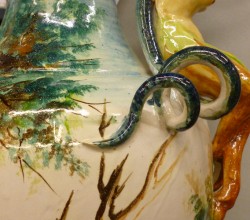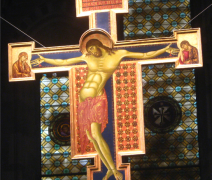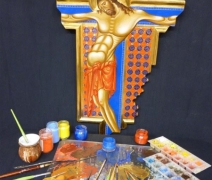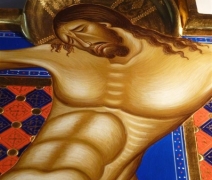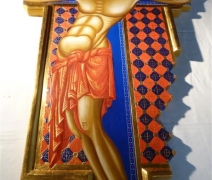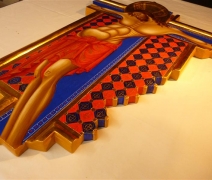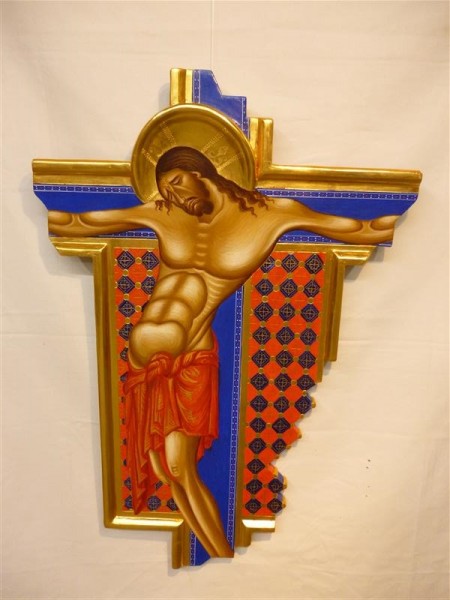
This table shows the central detail of the crucifix that Cimabue painted between 1268 and 1271, and now preserved in the Church of San Domenico in Arezzo.
I was commissioned by people with an average age of about 28 years for a married couple of the same average age.
Because of the special request of giving a crucifix, I proceeded to search for a crucifix little dramatic and very evocative, that would represent the motivational needs of the clients. The choice fell on the Cimabue Crucifix because it can arouse feelings of reflection in the vision of the subject. In particular, the face of Christ evokes feelings of sadness that most of despair. The decorative carpet on which lies the body can be interpreted as a foreshadowing of the Resurrection.
Even the light reflected from the gold leaf can be interpreted in this sense.
If it is necessary to realize a particular work so elaborate, I proposed to the young patrons (who were enthusiastic) outlines a selection of the “modern” thus facing the difficult choice of cutting off the limbs of Christ.
The technique I used is the classic one recommended by the Paper art Cennino Cennini, with which Cimabue realized this work: indeed as regards the decorative carpet the technique is superior to the original. This has been possible thanks to the small detail measurements performed for which it was possible the technique of graphite on gold and gold on the carpet in the original is given to the mission.
The table was not at all glossy, gold has been left in its maximum brightness, the colors left in their pure strokes. The Youths generations love the colors pure and do not have the antiquarian taste

